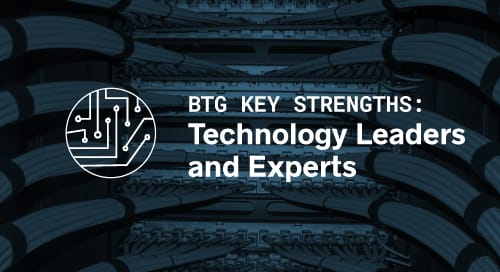
By now, many legacy companies are experimenting with data science, piloting specific tools and projects and seeing success in small areas. What’s proving to be more difficult: leveraging these wins to fundamentally change the way they operate across the business.
Independent consultant Matt Ahlers helps healthcare companies lead successful digital and data science initiatives. In our latest Expert Q&A, he talks about an initiative he helped launch at a global life science company to drive data science adoption across the enterprise.
Driving Data Science Adoption: Matt’s Perspective
You recently helped a global health and life science company establish a formal Council to drive data science adoption across the enterprise. Can you tell me about the project?
Like many organizations, this company had several fragmented data science efforts going on across the business. In some cases, these initiatives were at the forefront of what it was doing, while in other areas, they simply informed the work that flowed into traditional parts of the business. At the same time, many executives had grown up in an analog world and had yet to embrace data science on a larger scale.
What were some of the specific challenges?
Challenges included everything from understanding how to attract, train, and develop data scientists within the organization to empowering the people who didn’t have those skills to leverage data science tools and techniques. Questions my client faced included: How do you democratize data across the organization? Where should executives invest and how could they drive the business value? Which concepts and techniques should they employ based on their goals? How could they create a shared awareness of the opportunities and a definition of what good looks like?
Where did your work fit in?
The principal clients, strategic R&D, and supply chain executives, really helped drive engagement from key leaders across the business. I served, first, as a strategic thought partner to help them shape a council charter, organization structure, and meeting cadence. Then, I supported operational activities like onboarding new council members, creating data science training modules, highlighting successful case studies, and tracking work throughout the enterprise.
Initially, the Council was a bit of a startup effort. Once our work gathered momentum and we began to demonstrate the progress we had made, it became easier to tap other council members for additional resources, and some people even randomly volunteered to help out with the work.
Success breeds success.
It does. There were a number of things we did right that really made it possible.
Such as?
One was to make highly visible investments in the area and focus on educating top leadership. If you don’t show how an initiative impacts someone’s core business, they might view it as an interesting learning opportunity, but only if they have spare time—which, of course, they don’t. Instead, if you’re talking about it, their colleagues are talking about it, the board’s talking about it, and it’s understood that raising awareness about data science and its applications is a company priority, then everybody knows they need to be on board.
It can be challenging to help people understand where a new concept fits into the organization, especially one that’s so foundational to the way they approach daily business.
We made a big effort to ensure that key stakeholders could align around a common taxonomy and vocabulary for data science and digital literacy. Then we pushed it out in a coherent fashion, from the top, so that it would cascade throughout the organization. The last thing that you want to do is have people talking past each other because the terms are confused.
You also planned a Data Science Showcase to highlight success stories from across the company.
Celebrating successes is critical to getting buy-in throughout the business. There are two parts to this. First is awareness. An organization might be getting huge benefits from a change to a supply chain algorithm. But if you don’t call attention to it, leaders might conclude those benefits are due to better management, and not realize that the improvement was driven by the application of a whole new analytical approach. Second, these events can motivate and inspire practitioners to innovate more and improve retention.
How did you approach the data science talent challenges you mentioned earlier?
We developed a data science talent management strategy to make sure that everyone understood how to onboard and deploy these new hires. It’s a real challenge for traditional industries. Data scientists want concrete, interesting, cutting-edge problems to work on. If they’re not using their skills at your company, they’ll go find another organization to work for.
What about ensuring that everyone has the right processes and tools to collect, use, and share data while maintaining security standards and HIPAA requirements?
That’s a larger challenge, and the work is still ongoing. But it’s obviously the holy grail to unlock that for the organization. When we launched this initiative, we began by focusing on education and training, highlighting data science talent and the value that they brought to the company. Our idea was that those goals would be a little easier to obtain and would give us a bit of time to start the longer and more tedious process of defining better infrastructure around technology, security, and privacy.
I suppose it also helps ensure that everyone appreciates the business mandate for doing that unglamorous work.
It’s so important to help people understand the true value of big data sets, especially when they’re combined with other data sets. The workforces that lead and operate healthcare organizations need to be able to embrace and trust these emerging trends. The pace of change is also accelerating, so competitive gaps between firms will either increase or close at a faster rate.
GET THE SKILLS YOU NEED
Thousands of independent consultants, subject matter experts, project managers, and interim executives are ready to help address your biggest business opportunities.
About the Author
More Content by Leah Hoffmann
















